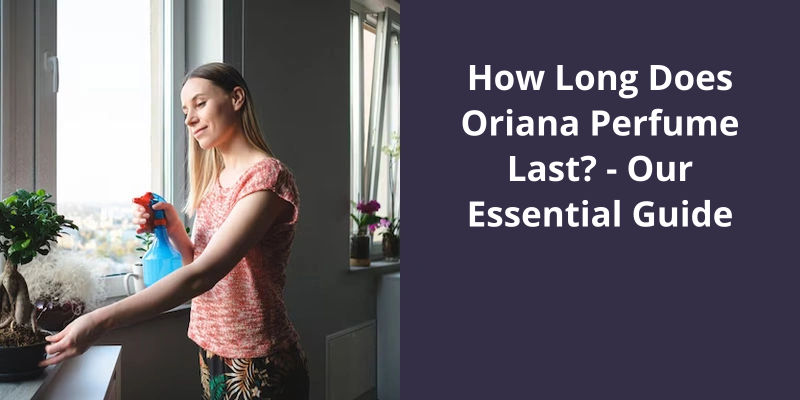Glycerin does not emulsify oil. While it’s true that glycerin is a versatile substance commonly used in cosmetic and skincare products, it doesn’t have the capacity to mix oil and water by itself. That’s because glycerin is a humectant, which means it draws moisture into the skin, rather than an emulsifier, which is a substance that can mix oil and water. Therefore, if you want to mix oil and water, you’ll need to use an actual emulsifier in addition to glycerin.

Can You Mix Oil and Glycerin?
When it comes to mixing oil and glycerin, it’s important to recognize the unique properties and abilities of each ingredient. Oil, whether it be coconut oil, olive oil, or any other type, is a fat that isn’t soluble in water. Glycerin, on the other hand, is a sugar alcohol that’s soluble in both water and alcohol.
An emulsifier is a substance that can bind oil and water or oil and glycerin together in a stable mixture. Vegetable glycerin, which is derived from plants, has emulsifying properties and can be used as an effective emulsifier.
Using too much oil may make the mixture too greasy, while using too much glycerin can make the mixture too sticky. Finding the right balance between the two ingredients is key to achieving the desired consistency and texture.
In addition to acting as an emulsifier, glycerin can also function as a thickener. When mixed with oil, it can help to thicken the mixture and give it a more creamy texture. This can be useful in a variety of applications, including making homemade lotions, creams, and other beauty products.
Overall, mixing oil and glycerin is possible with the help of an emulsifier like vegetable glycerin. By finding the right balance between the two ingredients and incorporating glycerin as a thickener, it’s possible to create a variety of different blends that are both effective and enjoyable to use. Whether you’re looking to make homemade beauty products or experiment with different recipes, understanding the properties of oil and glycerin can help you achieve the results you desire.
Common Uses for Oil and Glycerin Blends in Skincare and Beauty Products
Oil and glycerin blends are often used for their moisturizing properties in skincare and beauty products. They can be found in creams, lotions, and serums to help hydrate and soften the skin. Additionally, these blends can help improve the texture and appearance of the skin, and can even be used as a base for makeup products.
Understanding the properties of glycerin is essential when using it as a beauty product or ingredient in cosmetics. One question that often arises is whether or not glycerin will mix with oil. This is an important consideration, as it can impact the effectiveness of the product. In this article, we will explore this question in depth, and also delve into some tips for using glycerin effectively in your skincare routine.
Will Glycerin Mix With Oil?
Glycerin, also known as glycerol, is a natural compound commonly found in fats and oils. The physical properties of glycerin make it an important ingredient in a wide variety of products, including cosmetics, food, and pharmaceuticals. One common question is whether glycerin can mix with oil, and the answer is no. Glycerin doesn’t dissolve in oil, but in water and alcohol. This is because oil and water have different polarities and incompatible chemical structures.
When glycerin and oil are mixed together, they’ll not blend or create a homogenous mixture. They’ll simply separate into layers, with the oil on top and the glycerin on the bottom. This is because glycerin is a polar molecule with a hydrophilic head and hydrophobic tail, while oil is nonpolar with only hydrophobic properties.
However, this doesn’t mean that glycerin can’t be used in oil-based products. Glycerin acts as a humectant, meaning it attracts water from the air and helps retain moisture in the skin. When added to oil-based products, glycerin works to keep the skin hydrated by trapping moisture in the skins barrier.
It’s important to note that not all glycerin is equal. Vegetable glycerin, a variety of glycerin derived from plant sources, is commonly used in cosmetics and skincare products due to it’s natural properties and non-toxic nature. Synthetic or animal-derived glycerin may not have the same properties or safety standards as vegetable glycerin. It’s important to check the ingredient list and source of glycerin in products before using them.
What Are Some Examples of Oil-Based Products That Contain Glycerin?
- Hand creams
- Body lotions
- Shampoos
- Conditioners
- Facial moisturizers
- Sunscreen
- Lip balms
Source: How to use vegetable glycerin – eOil.co.za
Now that we know where glycerin comes from, it’s important to understand it’s properties. Specifically, many people wonder whether glycerin is classified as an oil or a water-based substance. Let’s dive deeper into this topic and explore the characteristics of glycerin.
Is Glycerin an Oil or Water?
Glycerin is widely used in cosmetics and personal care products due to it’s ability to moisturize and hydrate the skin. It’s chemical composition consists of three carbon atoms, three hydroxyl groups, and a root alcohol group. Despite it’s oily texture and appearance, glycerin is actually soluble in water, making it a versatile ingredient in various formulations.
Glycerin is often referred to as a humectant, which means it helps to attract and retain moisture in the skin. This is due to it’s ability to form hydrogen bonds with water molecules, creating a protective layer on the surface of the skin. This film helps to prevent water loss and provides a barrier against external environmental factors such as wind and pollution.
It’s properties make it an excellent ingredient that can be used to treat dry and sensitive skin, including those prone to acne and eczema. Additionally, it’s ability to boost moisture levels in the skin can help to reduce the appearance of fine lines and wrinkles.
It’s ability to moisturize and hydrate the skin makes it a popular ingredient in the cosmetic and personal care industry.
The Benefits and Drawbacks of Using Glycerin in Skincare Products.
- Glycerin is a natural humectant, which means it attracts moisture to the skin and helps keep it hydrated.
- It can also improve the skin’s barrier function, helping to protect it from environmental stressors.
- Some studies have shown that glycerin may have anti-aging benefits, such as reducing the appearance of fine lines and wrinkles.
- On the downside, glycerin can sometimes be irritating to certain skin types, especially if used in high concentrations.
- It may also exacerbate acne in some people.
- In addition, some glycerin used in skincare products may be derived from animal sources, which may not be suitable for vegetarians or vegans.
While glycerin has plenty of benefits for the skin, it can be even more effective when mixed with other natural ingredients. One popular combination is glycerin and coconut oil. Many people wonder if it’s safe to mix these two ingredients, and the answer is yes! In fact, mixing coconut oil with glycerin can create a super moisturizing and nourishing lip balm that hydrates and soothes dry, chapped lips. Let’s explore how to create this DIY lip balm and the benefits of using these natural ingredients together.
Can I Mix Coconut Oil With Glycerin?
Coconut oil and glycerin are two amazing natural ingredients that offer a range of benefits for the skin. While these two ingredients work wonders on their own, combining them can create a potent moisturizing mixture for the skin. However, there are some things that you should know before mixing these two.
When mixed with shea butter, cocoa butter or coconut oil, glycerin creates an even more effective moisturizing agent that can provide long-lasting hydration to the skin. These natural ingredients work in synergy to create a potent moisturizing barrier that locks moisture in and keeps your skin healthy.
While mixing coconut oil with glycerin is generally safe, it’s essential to use them in the right proportions to avoid any adverse effects. If you use too much glycerin, it can cause a sticky and greasy feeling on your skin, which can be uncomfortable. On the other hand, if you use too much coconut oil, it can clog your pores and cause breakouts, especially if you’ve oily skin.
You can start with a 1:1 ratio and gradually adjust the proportions to suit your skin type. Always ensure that you’re using high-quality ingredients to avoid any adverse reactions.
However, it’s important to use them in the right proportions and experiment with different ratios to find the perfect balance for your skin. With consistent use, this natural mixture can help keep your skin soft, smooth, and healthy.
DIY Skin Care Recipes That Use Glycerin and Coconut Oil
- Glycerin and Coconut Oil Face Moisturizer
- Glycerin and Coconut Oil Lip Balm
- Glycerin and Coconut Oil Body Scrub
- Glycerin and Coconut Oil Hand Cream
- Glycerin and Coconut Oil Face Cleanser
In recent years, natural skincare products have become increasingly popular as people seek alternatives to traditional lotions and creams. One such product is glycerin and olive oil lotion, which is known for it’s nourishing and moisturizing qualities. This rich lotion is designed to provide the skin with essential nutrients and life, leaving it soft, smooth, and vibrant. In the following sections, we will explore the benefits of glycerin and olive oil lotion in more detail and discuss how it can be used to keep your skin looking and feeling it’s best.
What Is Glycerin and Olive Oil Lotion Used For?
Using glycerin and olive oil lotion has become increasingly popular, as more and more people seek natural and organic ingredients for their skincare routine. Glycerin is a natural humectant, which means that it helps to draw moisture into the skin, keeping it hydrated and plump. This can be especially beneficial for people with dry or sensitive skin, who may struggle to retain moisture.
Olive oil, on the other hand, has long been used in traditional Mediterranean skincare for it’s moisturizing and antioxidant properties. It’s rich in vitamins and essential fatty acids, which can help to nourish and protect the skin from environmental damage.
Whether you’re dealing with rough patches, flaky skin, or conditions like eczema or psoriasis, this lotion can help to restore hydration and promote healthy skin. The combination of nourishing ingredients like shea butter and aloe vera can also help to reduce inflammation and redness, making it a great option for sensitive or reactive skin.
The Benefits of Other Natural Ingredients Commonly Found in Lotion, Such as Coconut Oil, Jojoba Oil, and Avocado Oil.
- Coconut oil can help moisturize dry skin, reduce inflammation, and improve skin elasticity.
- Jojoba oil has anti-inflammatory properties and can help regulate oil production in the skin, making it a good option for both oily and dry skin types.
- Avocado oil is rich in antioxidants, fatty acids, and vitamins A, D, and E, which can nourish and protect the skin. It may also help improve skin texture and reduce the appearance of fine lines and wrinkles.
Conclusion
When it comes to the question of whether glycerin can emulsify oil, the answer is a resounding yes. It’s ability to blend water-based and oil-based ingredients together makes it an ideal choice for a variety of applications, from cosmetic products to food and beverage formulations. Glycerin's natural properties make it a popular choice among formulators who want to create stable, effective blends that offer a range of benefits to consumers.





